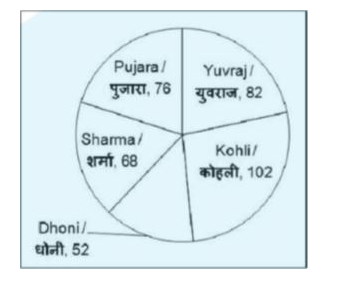A famous cricket player has so far scored 6978 runs in test matches. He wishes to complete 10,000 runs. How many more runs does he need?
To find out how many more runs the cricket player needs to score to reach 10,000 runs, we can follow these steps:
Step 1: Identify the total runs needed
The player wants to reach a total of 10,000 runs.
Step 2: Identify the runs already scored
The player has already scored 6,978 runs.
Step 3: Set up the subtraction
To find out how many more runs are needed, we will subtract the runs already scored from the total runs desired:
Runs needed=Total runs desired−Runs scored
Runs needed=10,000−6,978
Step 4: Perform the subtraction
Now, we will perform the subtraction:
1. Start from the rightmost digit:
- 0 - 8: We cannot subtract 8 from 0, so we borrow 1 from the next column (which is 0), making it 10. Now we have 10 - 8 = 2.
2. Move to the next column:
- 0 (after borrowing) - 7: Again, we cannot subtract 7 from 0, so we borrow 1 from the next column (which is 0), making it 10. Now we have 10 - 7 = 3.
3. Move to the next column:
- 0 (after borrowing) - 9: We cannot subtract 9 from 0, so we borrow 1 from the next column (which is 1), making it 10. Now we have 10 - 9 = 1.
4. Finally, we have:
- 1 (after borrowing) - 6 = 4.
Putting it all together, we have:
10,000−6,978=3,022
Conclusion
The player needs 3,022 more runs to complete 10,000 runs.
---
The player wants to reach a total of 10,000 runs.
The player has already scored 6,978 runs.
To find out how many more runs are needed, we will subtract the runs already scored from the total runs desired:
Runs needed=Total runs desired−Runs scored
Runs needed=10,000−6,978
Now, we will perform the subtraction:
1. Start from the rightmost digit:
- 0 - 8: We cannot subtract 8 from 0, so we borrow 1 from the next column (which is 0), making it 10. Now we have 10 - 8 = 2.
2. Move to the next column:
- 0 (after borrowing) - 7: Again, we cannot subtract 7 from 0, so we borrow 1 from the next column (which is 0), making it 10. Now we have 10 - 7 = 3.
3. Move to the next column:
- 0 (after borrowing) - 9: We cannot subtract 9 from 0, so we borrow 1 from the next column (which is 1), making it 10. Now we have 10 - 9 = 1.
4. Finally, we have:
- 1 (after borrowing) - 6 = 4.
10,000−6,978=3,022
The player needs 3,022 more runs to complete 10,000 runs.
Topper's Solved these Questions
Similar Questions
Shekhar is a famous cricket player. He has so far scored 6980 runs in test matches. He wishes to complete 10,000 runs. How many more runs does he need?
View SolutionShekhar is a famous cricket player. He has so far scored 6980 runs in test matches. He wishes to complete 10,000 runs. How many more runs does he need?
View Solution
Knowledge Check
Which player has scored the most runs in a single Test innings?
AGraham GoochBMatthew HaydenCBrian LaraDAgarkarA cricket player after playing 10 tests scored 100 runs in the 11th test. As a result, the average of his runs is increased by 5. The present average of runs is
A45B40C50D55Who has scored the highest run in in a test cricket innings?
ASanath JayasuriyaBGarfield SobersCBrian LaraDHanif Mohammad
The number of runs scored by a cricket player in 25 innings are as follows: 26,35,94,48,82,105,53,0,39,42,71,0,64,15,34,67,0,42,124,84,54,48,139,64,47 Rearrange these runs in ascending order. Determine the player, is highest score. How many times did the player not score a run? How many centuries did he score? How many times did he score more than 50 runes?
View SolutionA cricket player after playing 10 tests scored 100 runs in the 11th test. As a result, the average of his runs is increased by 5. The present average of runs is.
एक क्रिकेट खिलाड़ी 10 टेस्ट खेलने के बाद 11वें टेस्ट में 100 टन बनाता है। परिणामस्वरूप, उसके रनों का औसत 5 बढ़ जाता है। रनों का वर्तमान औसत कितना है?
View SolutionThe given Bar Graph presents the runs scored (A) and strike rate (B) of a batsman in five matches. Strike Rate is the number of runs scored per 100 balls faced. The strike rate (B) is taken on record only when the batsman scores at least 30 runs in a match.

How many runs the batsman should have scored in the fifth match in as many balls he had faced in that match so that the average strike rate of the second and the fifth match becomes 120?
View SolutionThe given pie chart shows the runs scored by 5 players in a match.

The runs scored by Kohli are how much percent more than the runs scored by Sharma ?
View SolutionThe average of runs of a cricket player of 10 innings was 32. How many runs must he make in his next Innings so as to increase his average of runs by 4 ?
View Solution
